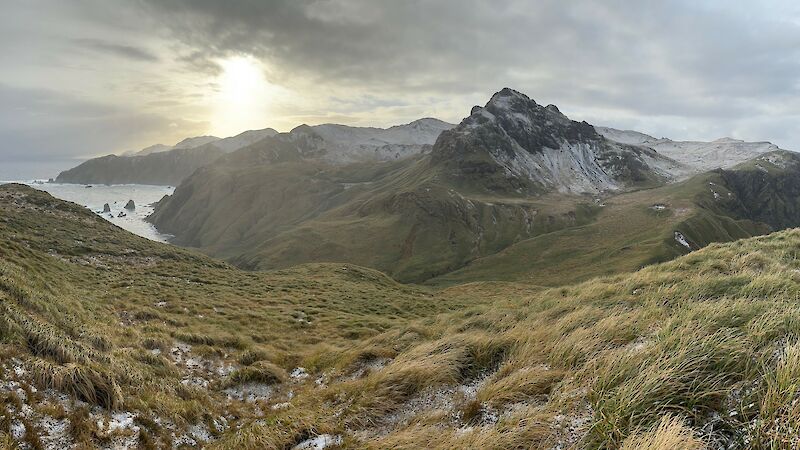Fifteen years ago, sub-Antarctic Macquarie Island was so badly ravaged by rabbits, rats and mice that its wildlife populations were fighting for survival.
Rodents were predating on invertebrates and eggs, and hillside erosion - exacerbated by rabbits - was leading to landslides that in one instance, killed hundreds of king penguins at Lusitania Bay.
Acknowledging the seriousness of that threat, in 2007 the Tasmanian and Federal governments funded an ambitious three-year, $25 million campaign* to wipe out all three pest species at once.
It relied on a targeted strategy of aerial baiting, release of the calicivirus, and dogs to ensure the last of the rabbits and rodents were eradicated.
Dogs and their handlers scoured the island twice over, covering more than 90,000km until in 2014, no rat, mouse or rabbit had been seen for the required two-year period and the island was declared pest free.
"There were so many challenges thrown up"
Andrea Turbett is Macquarie Island's Executive Officer and has spent many years working on the island as Ranger In Charge.
She was involved in planning the Macquarie Island Pest Eradication Program (MIPEP).
"It was very ambitious," she said.
"There were so many challenges thrown up. We were tackling three different introduced species all at once, on such a remote challenging island in the winter.
"At the time it was a ground-breaking international success and it's something we should all be so proud of."
This year is the tenth anniversary of MIPEP's success.
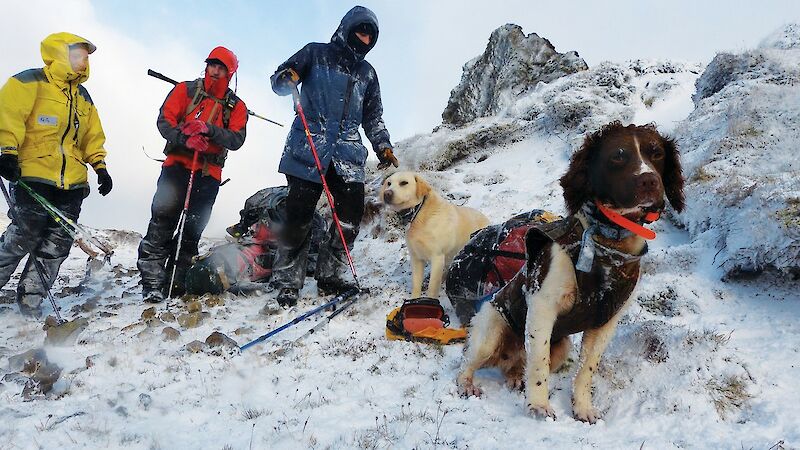
Vegetation recovery "absolutely extraordinary"
Dr Aleks Terauds, Program Leader at the Australian Antarctic Division, and Dr Kris Carlyon, a wildlife biologist with Tasmania's Department of Natural Resources and Environment, both spent years studying the island before the campaign and recently travelled back on the annual resupply voyage.
They did a ten-day return hike from the station in the north, to Hurd Point in the far south, and came back elated with the transformation they had witnessed.
"We had a great look at the albatross slopes down on that south-west corner and the vegetation recovery we're seeing is absolutely extraordinary," Dr Carlyon said.
"We were walking through tussocks that were twice my height.
"The albatross were nesting on pretty exposed slopes when rabbits were here. The tussock growth is really solidifying the slopes and means erosion isn't such a problem for those species anymore."
Dr Terauds spent years living in remote field huts on the island while studying the wildlife and is equally amazed.
"It was incredible to get back there and see the slopes that were once completed denuded of vegetation by rabbits, looking really healthy with lots of tussock and mega herbs," he said.
"Some of us on this trip have been working on this wildlife monitoring program for many years and what we're seeing now, 15 years on, is a really big improvement in the vegetation on the island, with important flow-on effects for the breeding sea birds.
"From a vegetation point of view, the island is in great shape."
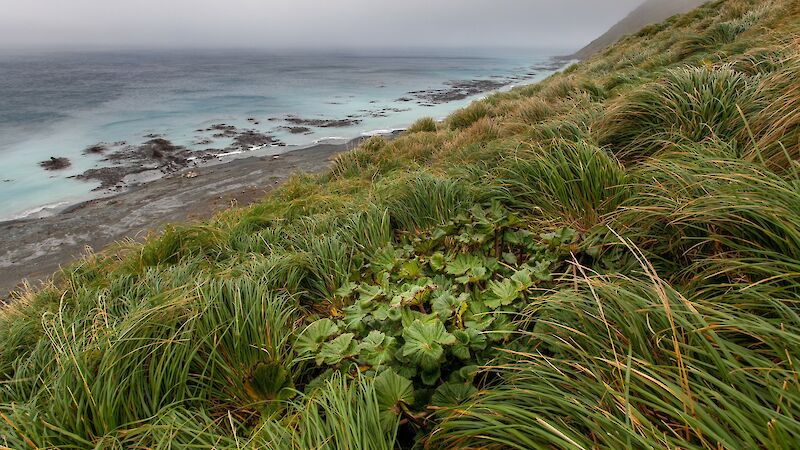
"It was a price we were prepared to pay"
A consequence of the baiting program was the death of some scavenging seabirds, like giant petrels and skuas, which fed on the dead rodents.
Mitigating measures were put in place to reduce that impact, including removing and burying carcasses, but Dr Carlyon says the price of inaction would have been much greater.
"We always knew it was going to happen, it always does happen in places when you do an aerial baiting program," he said.
"It was a price we were prepared to pay to achieve the desired result but those species are bouncing back now, they're returning to their former numbers."
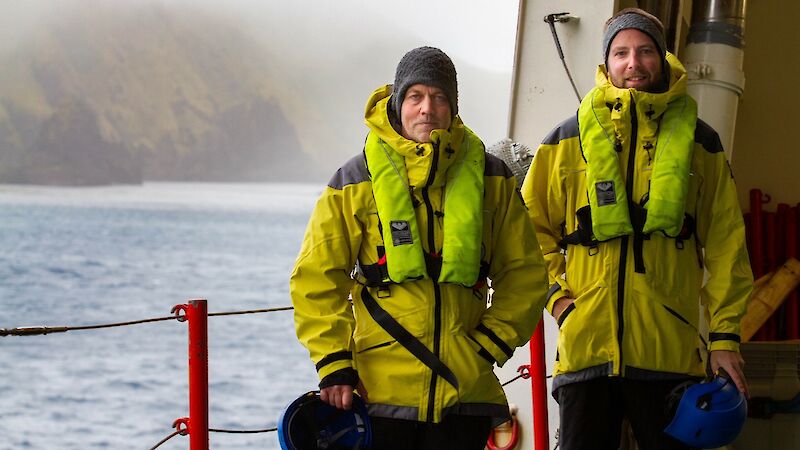
"Biosecurity threats our number one threat"
Attention has turned now to monitoring the recovery of Macquarie Island's wildlife and making sure it remains pest free.
Exhaustive biosecurity measures are in place to make sure rodents, insects and weeds are kept out.
Curly the rodent detection dog goes through cargo before it is loaded on RSV Nuyina at the Hobart end, and she does it again on Macquarie Island to make sure nothing gets through.
"Biosecurity threats are our number one threat across the whole island so we have to be really, really vigilant," Ms Turbett said.
"The main one is the reintroduction of rodents but also insects are really important because they have huge ecosystem impacts, as do weeds.
"It would be almost impossible to eradicate any of those species if they became established so it's much cheaper and more effective to stop them getting established in the first place."
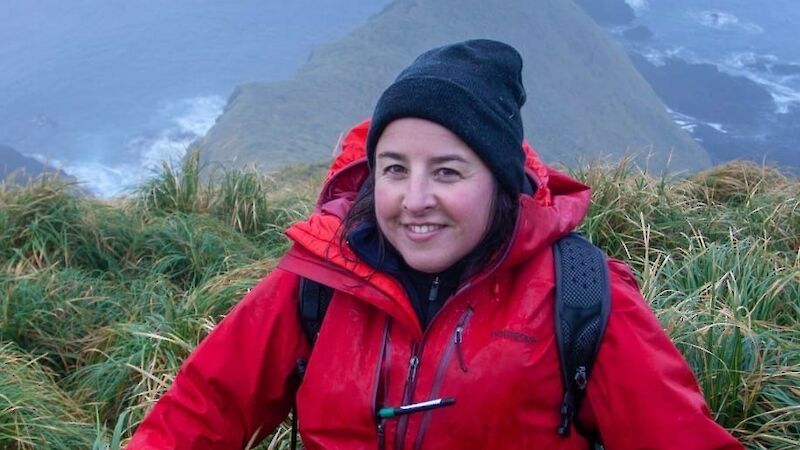
Avian influenza a looming threat
Wildlife monitoring is also being done regularly to identify the species that may be struggling.
Gentoo penguin numbers, for example, are declining and no-one really knows why.
"At the moment we're seeing change in terms of vegetation improving, but we have a lot of potential change on the island, including climate changes and the spectre of High Pathogenicity Avian Influenza," Dr Terauds said.
"Without this monitoring, we don't know what the current status and trajectories are and importantly, what we need to do about it.
"We will now prioritise which species we need to monitor, and allocate resources accordingly across the next 5 to 10 years to work out what's happening with these priority species."
*The Macquarie Island Pest Eradication Project was managed by Tasmania Parks and Wildlife Service with support from the Australian Antarctic Division. It was co-funded by the Tasmanian and Australian Governments.
